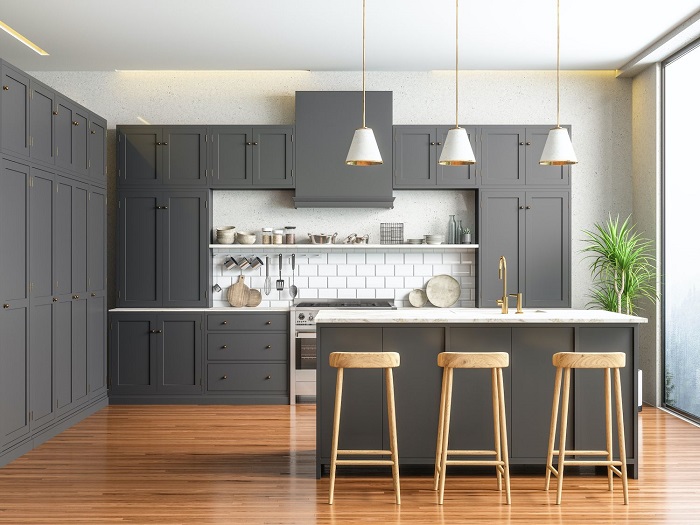If you’re planning a kitchen remodel and exploring design trends, you might have stumbled upon the transitional style. It’s a beautiful blend of timeless traditional charm, and modern sleek elements. Best of all, it creates a look that’s both unique and effortlessly appealing.
The result is a space that feels relaxed, fresh, and welcoming. A kitchen that’s not only comfortable for you and your family but also inviting for guests. While a home designer can help you bring this aesthetic to life, you can also dive into the details yourself. Keep reading to discover three simple ways to incorporate the popular transitional style into your kitchen!

Ask an Expert About Blending Styles
The transitional style is wonderfully flexible, so it’s easy to tailor this look to your kitchen. It’s all about blending the warmth of traditional design with the clean lines of modern aesthetics. But figuring out where to incorporate each style, and striking the perfect balance, can be a bit tricky. That’s where the magic happens: getting the mix just right is key to nailing the design.
That’s why working with a home design expert can be such a game-changer. They’ll help you create a space that’s visually stunning while staying true to your personal taste.
Have a standout piece in mind, like a rustic sink or a unique faucet? A designer can guide you in selecting cabinets, countertops, and other elements. The design expert will highlight your focal point, and also seamlessly tie everything together. The goal is all about creating a kitchen that feels uniquely you.
Pay Attention to Accents and Details
If you’re aiming for a transitional look in your kitchen, a design expert will suggest starting with neutral tones. White or black is a good starting foundation for a space. Combining these two contrasting colors can give your kitchen a striking and modern edge while keeping it timeless.
From there, they’ll suggest layering in color and patterns to bring the design to life. Think about elements like backsplashes, flooring, and trims. For example, adding a wooden trim around your window frames can instantly warm up a kitchen that might otherwise feel too minimalist.
Curious about how to make it all come together? Reach out to our local designers. We can help you uncover unique ideas to create a kitchen that’s both stylish and uniquely yours!
Focus on Lighting
Don’t overlook the role lighting plays in bringing your transitional kitchen to life. White or light-colored cabinets and countertops can beautifully reflect natural light from nearby windows, creating a bright and airy feel. As you plan your kitchen design, think about how the placement of colored accents might unintentionally interfere with this lovely effect.
For lighting fixtures, pendant lights are a fantastic choice for enhancing the open, spacious vibe that transitional kitchens are known for. They save valuable floor space while offering a chance to add a pop of color or pattern to the room. With so many styles available, pendant lights let you play with both traditional and modern touches. Pendant lights are a perfect finishing touch for a transitional-style kitchen.
Next Steps
Creating a transitional-style kitchen is all about blending the best of timeless tradition and modern sophistication. By focusing on neutral foundations, thoughtful accents, and strategic lighting, you can craft a space that feels fresh, inviting, and uniquely yours. Whether you’re drawn to rustic statement pieces, sleek modern finishes, or a mix of both, a design expert can help you strike the perfect balance.
Ready to bring your dream kitchen to life? Reach out to our Maryland design experts today, and let’s create a space that’s as functional as it is beautiful. Your ideal kitchen is just a conversation away!
